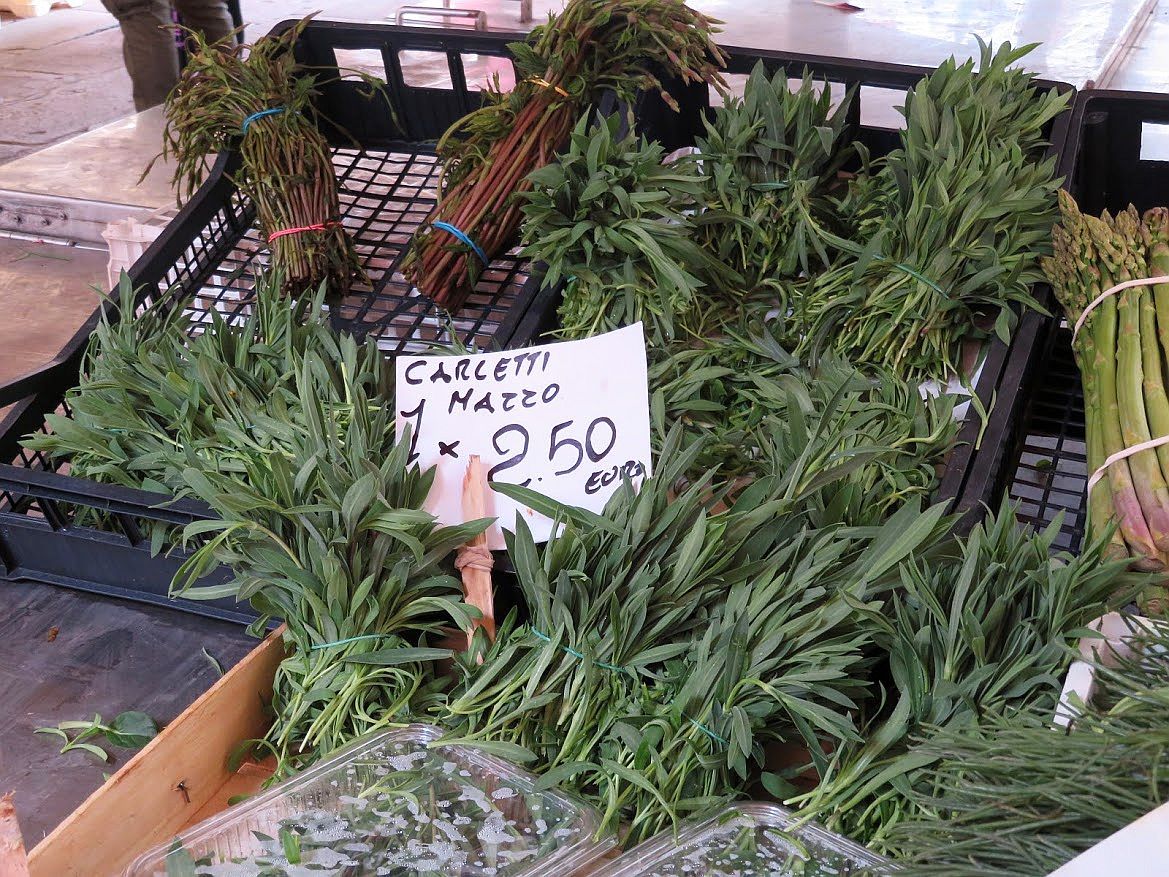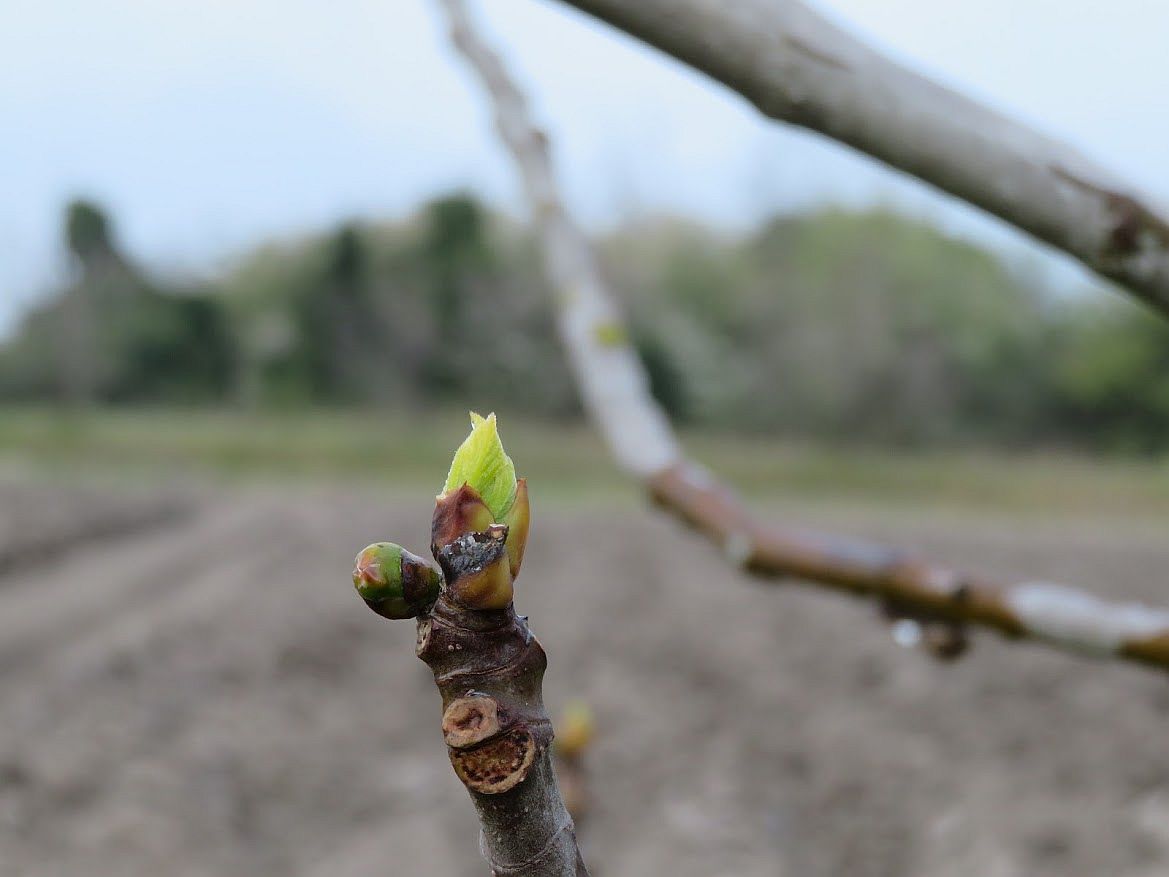
Or to my non-Christian friends, happy whatever spring-time commemoration you observe.
The operative word is “spring.” As in “budding flowers and fruits.” We have them all over Venice and environs. So please accept these images in the spirit of reawakening, and let us continue to hope for the best.
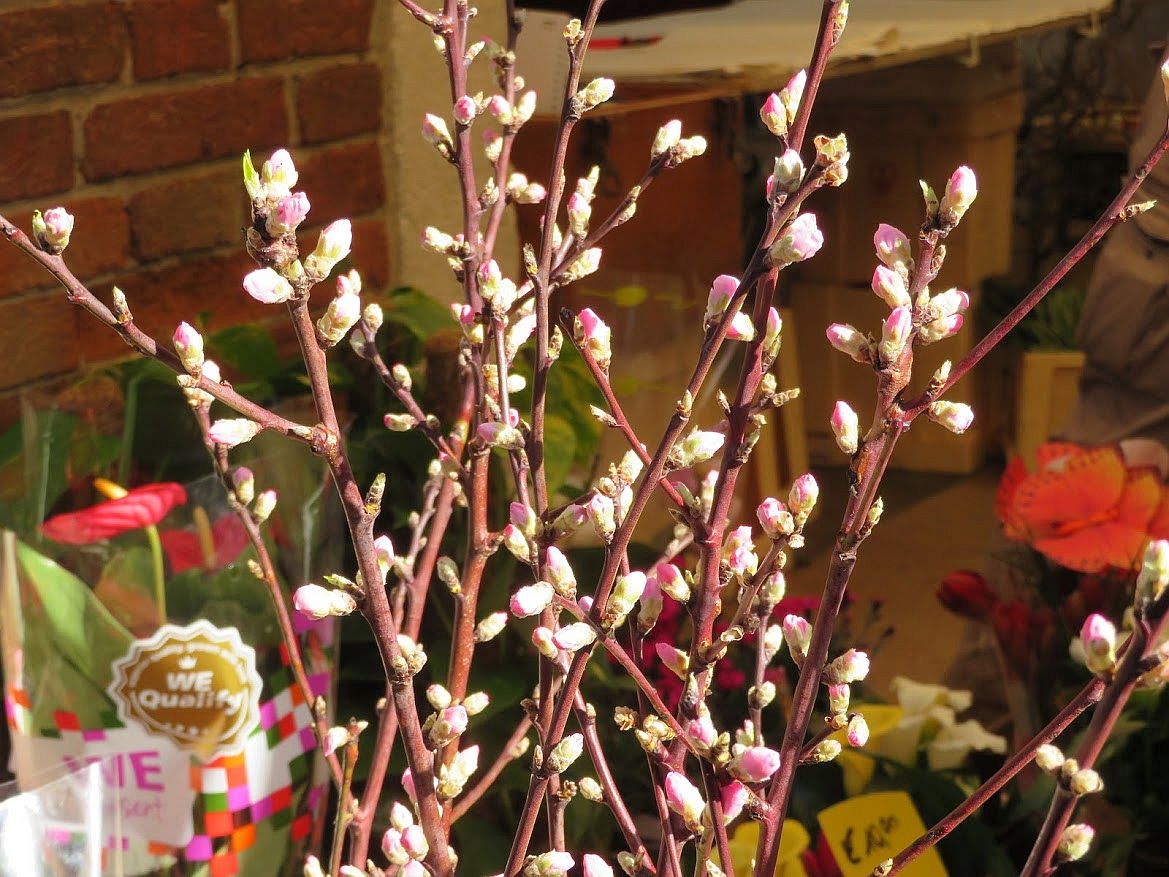

True Love Street
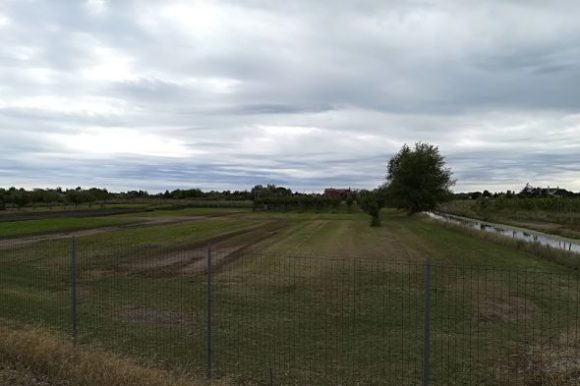
Anyone going to the center of town on the island of Sant’ Erasmo (which is redundant — the town is nothing but center) has the option of changing vaporettos at the first stop (“Capannone”) and proceeding to the next stop (“Chiesa”), or spending a tranquil 30 minutes walking from C1 to C2.
The first time I did this was unintentional. Years ago I was voyaging toward the center of town to watch the three Venetian rowing races held there every year on the first Sunday in June. But bad timing on my part meant that I was stuck ashore, because I had had no reason to know that service on that part of the vaporetto’s normal route would be suspended; for a few shining moments each year the vaporettos are banned from what is essentially the racetrack, watery though it may be. This is one of the few occasions in which a Venetian boat being rowed gets to tell a motorboat what it can’t do.
Trekking along among the fields, I discovered I really liked going that way. So a few weeks ago, on the way to the early October races, I happily set out on my pastoral excursion.

The road is officially named Via de le Motte, which roughly means “Street (or Way) of the Small Artificial Islands Constructed at Convenient Points for the Fishing Valleys.” Man-made hillocks, basically, which makes sense considering how much work has been done during the centuries to make the lagoon useful to people. But it wasn’t long before I discovered that the impending matrimony of two unknown lovers had inspired at least one friend (possibly more than one) to offer a series of dire, last-minute warnings spray-painted onto the asphalt.
For all I know, though, they might have been sprayed on in the dark of night by the groom himself. Or best man? Matron of honor? Mother of the bride? Her father? Her father-in-law?
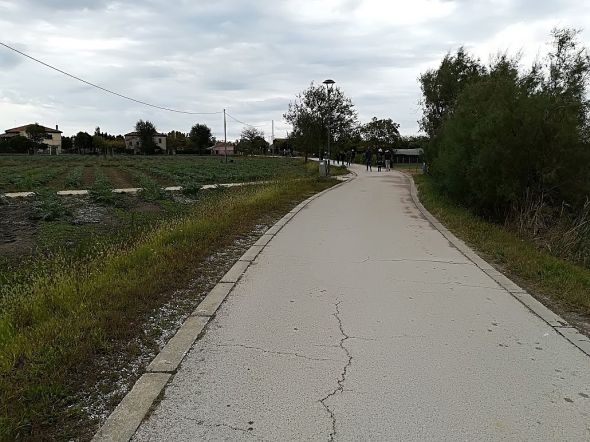
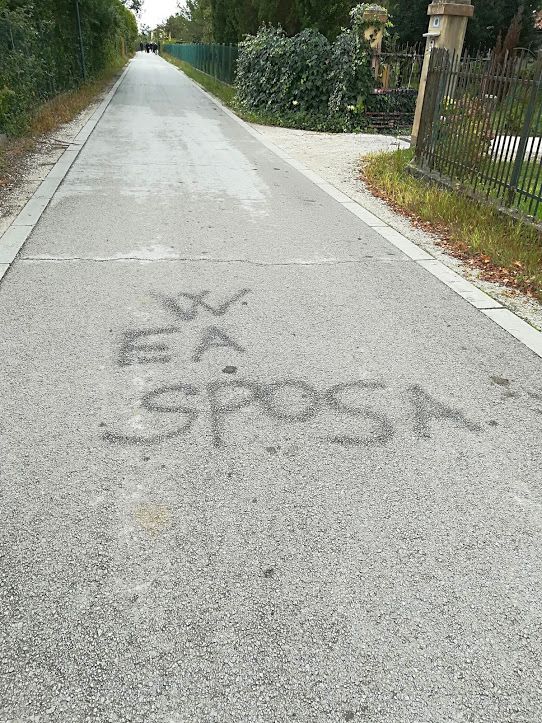
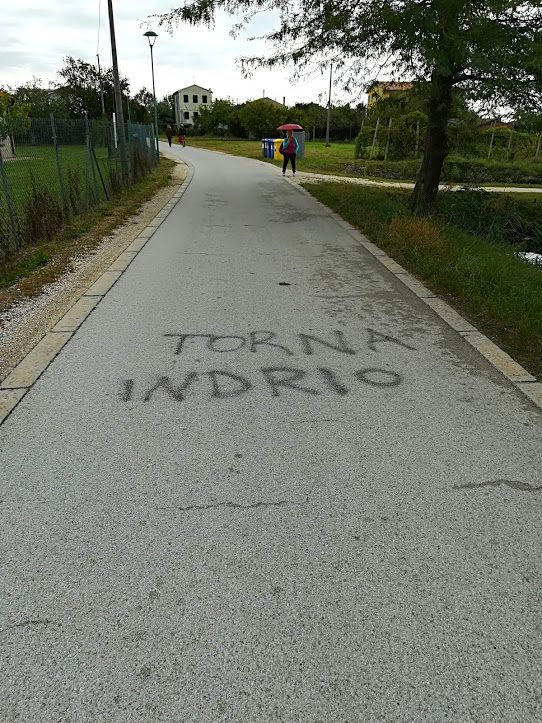


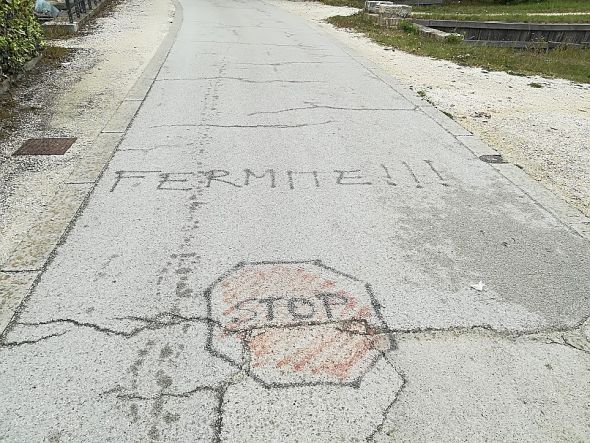

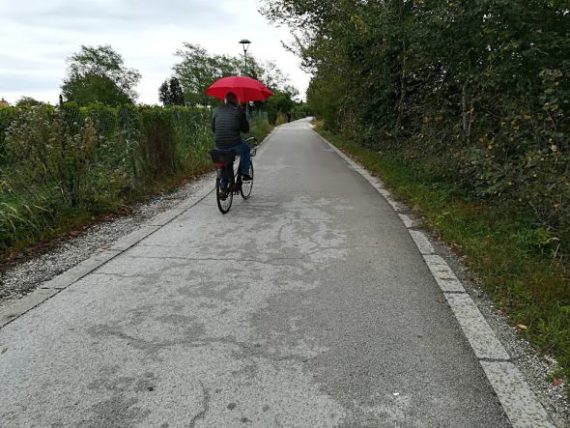


“Sei ancora in tempo” (you still have time). I’m beginning to tend toward the best man as perpetrator. A rejected lover? It wouldn’t be the first time.
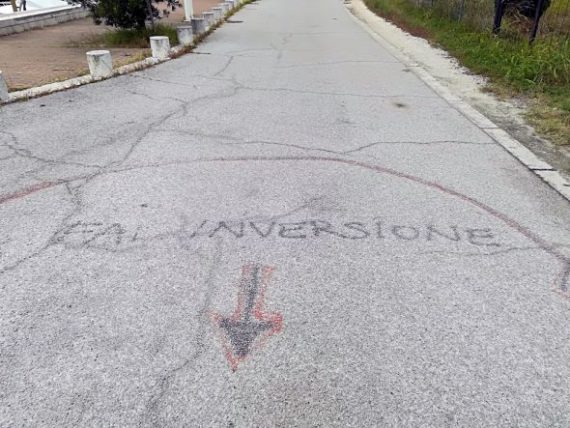
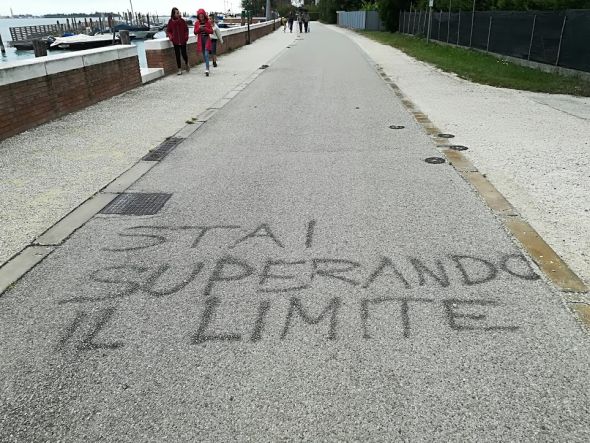


And so the weird seer fades into the boggy marshes, his/her/their exhortations exhausted.
“The course of true love never did run smooth,” Shakespeare averred. Who’d have thought he’d seen the road on Sant’ Erasmo?
Locavore on the loose
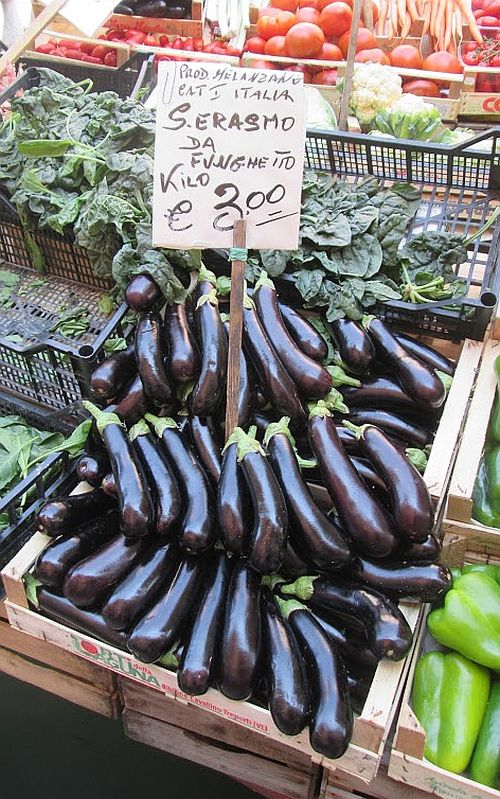
We have been gasping under a suffocating heatwave for at least two weeks (months, years…losing track of everything), with temperatures in the 90s (F) and humidity beyond calculating.
My vital functions are down to the minimum, and evidently my brain isn’t on the “Save First” list, so my posts will also be at the minimum for a short while.
But there was a lady the other morning at the fruit and vegetable boat who gave me an unexpected little jolt.
I had just begun to tell Massimo and his cigarette what I wanted when the lady came bustling up behind me. She already had her vegetation in a thin plastic bag, but she announced that it was threatening to give out at any moment.
Without so much as a by-your-leave (I guess when my brain disappears, the rest of me goes with it?) she extended the bag toward Massimo to demonstrate its fragility and asked him to give her another one. She spoke in Italian but I couldn’t place the accent — it seemed to come from somewhere in the central regions. But I could tell by her behavior that she wasn’t from around here.
“A stronger one,” she added in a way that blended a whiff of anxiety with a strong gust of busybody. “You can see that this one isn’t going to hold out. It really is too thin. Just think if I were to try to take it onto the vaporetto and it broke, I don’t know what I’d do.” She did seem a little keyed up. “So another bag, please. I’ll pay.”
“You know, you could also carry your own canvas shopping bag,” Massimo remarked in a noncommittal way. (He said “canvas,” although everybody uses ripstop nylon these days. Anyway, she knew what he meant.) It was very nice, the way he accommodated her without creating any further anxiety while at the same time letting her know that her fate, where her fruit was concerned, didn’t have to depend on him, or the firemen, or the police divers, or anybody but herself.
“Oh no, I don’t like those bags,” she quickly replied, implying that he’d suggested something her mother had warned her never to be seen with. My own mother was certainly implacable where it came to some things, such as my walking barefoot in the summer on the sidewalk just in front our house, because people would think I belonged to the Jukes and the Kallikaks.
Massimo handed her the never-fail sturdier green plastic bag. “Ten cents.” Asking for the money confirmed that she isn’t from around here; I think he was making a point.
She paid. She left.
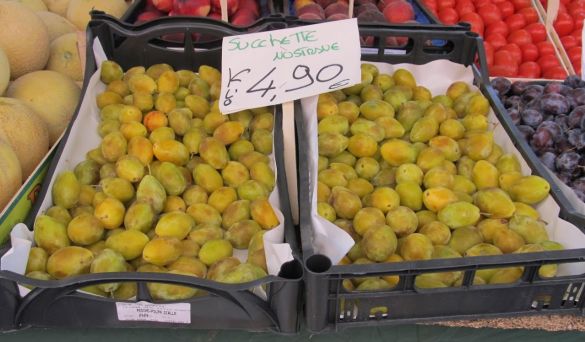
“Wow,” I said as he turned his attention back to me. “No canvas bags.” He gave a little shrug and an even littler smile.
“Yesterday she asked for lemons from Sant’ Erasmo,” he said. “And bananas from Sant’ Erasmo.” (To any reader who might not remember that these delicacies do not, are not, and could not be grown on Sant’ Erasmo — well, maybe the lemons could, I’m not sure — it would be like asking for mangosteens or manioc from Sant’ Erasmo).
“They’re really good,” I said, smiling with fake sincerity. “A lot of people don’t know that. Did you give them to her?”
“Of course.”
What is more treacherous than a very thin and overloaded plastic bag? A tiny bit of information that you don’t understand. Just because she had seen “Sant’ Erasmo” listed on various signs stuck into piles of local produce — eggplants, string beans, leeks — she interpreted this as “best” because it’s right next door, the closest loca that a vore could want.
I was sorry that she’d let herself improvise, because she was clearly so sure of herself in every way. Food for thought. From Sant’ Erasmo.

MOSE: It’s just money
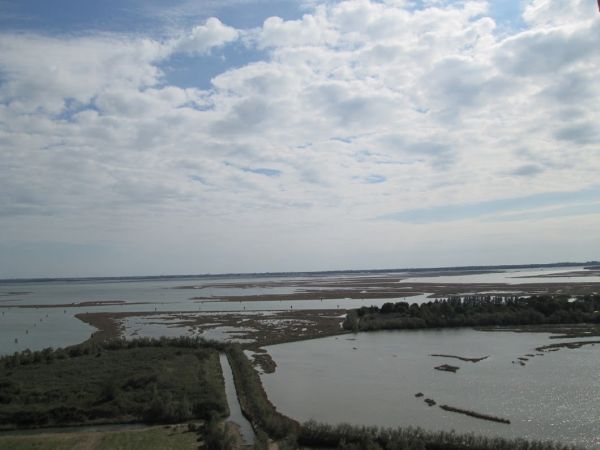
It’s not that I want to talk about MOSE any more than I want to gnaw off a hangnail, but it’s not my fault if wondrous developments continue to pop up in the endless saga of this undertaking. And even if you are not a connoisseur of wondrousness (wondrosity?) in bloated public works, there may be a few people left who still are interested in how this thing is getting along. By which I mean those people who used to ask me about it with such eagerness and curiosity and goodwill and hopefulness, seeing that until just a few years ago the Destiny of Venice was trumpeted by the press to be hand- and leg-cuffed to the success or failure of this … thing.
One recalls that the most recent date projected for finishing its construction (and beginning the TWO-YEAR TESTING) was the end of 2018. But brace yourselves: It’s going to be later. They say that the conclusion will be January 1, 2019. Or when the cassowaries return to Capistrano. Or when Jesus comes back. Everything depends on everything else, which is a fancy way of saying “money.”

Here is a rundown of the situation as outlined by Roberto Linetti (Interregional Superintendent of Public Works) to the city councilors a few days ago:
The job needs more money. (I can’t comment on that anymore; it’s like saying the sun needs to come up tomorrow.) It needs 221 million euros — as do we all — to finance the completion of 60 remaining aspects of the project, 40 of which must be finished this year. Only 40 million euros have been released from the total allotment so far, and the rapport between work done and payments made is not encouraging.
“The construction sites are not going well,” Mr. Linetti admitted. Everything is slowing down because the private companies have slowed down, which they’ve done because of the financial and legal Gordianosities of the Consorzio Venezia Nuova, the former governing consortium, and its collapse under the weight of its financial skulduggery. The companies have slowed down on working because payments due them are arriving even more slowly. “If the private companies aren’t motivated to go ahead,” said Linetti, “it’s hard to make them go ahead, even by kicking them.”
But every day that the construction is stalled, the underwater parts are deteriorating, which will only require more expenditure down the line. It’s a situation that brings to mind the notion that “We can’t stop fighting because otherwise our boys would have died for nothing.”
The MOSE annual budget also earmarks 15 million euros for caring for the lagoon (in unspecified ways). Considering how much damage to the lagoon the whole project is causing, that seems fair. Sort of. Nice they remember there is a lagoon.
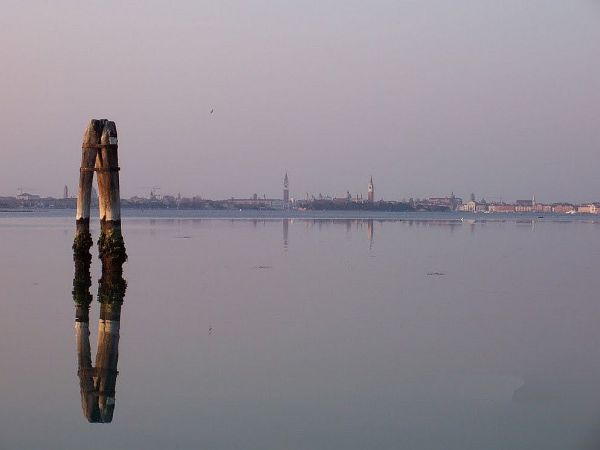
Projected cost of administration and maintenance. This is a big one, which few people paid much attention to in the giddy days of selling contracts and all.
“We think that the administration of MOSE will cost about 80 million euros a year,” Linetti told the city councilors. “And that’s not much for a work of this importance and complexity in an area like Venice, considering that between 20-30 million are solely the cost of the utilities for the system’s functioning. Between 15-20 million euros a year will be for personnel, at least 100 of them. Then there are 30-40 million for the maintenance itself,” including the undefined work in the lagoon. Let me repeat that: The maintenance work itself will cost 30-40 million euros a year. “The State surely won’t fail to maintain its support.”
The maintenance work will be undertaken in the Arsenal, where the gates will periodically be brought to be cleaned, stripped and revarnished. Naturally a new hangar will have to be constructed for this work, which will cost 18 million. There are more zero’s swarming around the MOSE accounts than there are mosquitoes on Sant’ Erasmo at sunset in July.
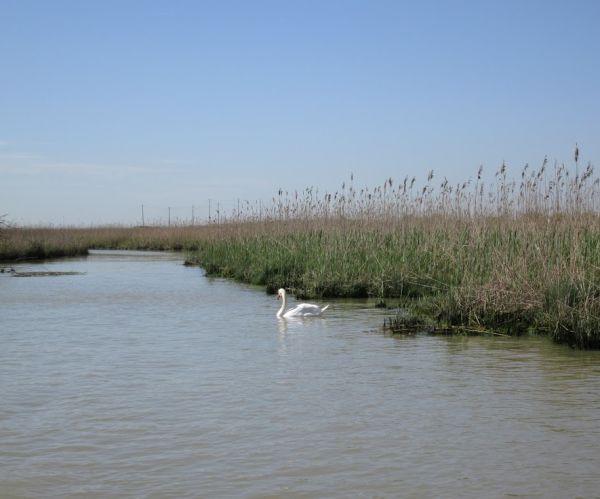
And the use of the gates? The news is now that to protect Venice from exceptional high tide, it will probably be necessary to raise only the gates at the inlet at San Nicolo on the Lido, leaving the gates at Malamocco and Chioggia peacefully reposing underwater.
“The experts have verified,” said Linetti, “that closing only the inlet at the Lido will result in a significant lowering of the level of the tide in the historic center, without the necessity of closing the entire system.” So all that work and expense to build gates at all three inlets was…….pointless?
In fact, knowing that the Lido gates would be used the most frequently was the reason, according to Linetti, why more “materials” were dedicated to the construction there. And therefore, he says, “There will be a saving on the costs of maintenance.”
He has now totally lost me. Where do these savings on maintenance come from? On the gates that will be used more often (theoretically), or those which therefore will be used less? I could take high-powered binoculars and I still don’t see savings anywhere. At this point I’m not even sure what savings look like.

(I am indebted to the excellent reporting of Enrico Tantucci in La Nuova Venezia of 10 January 2018.)


